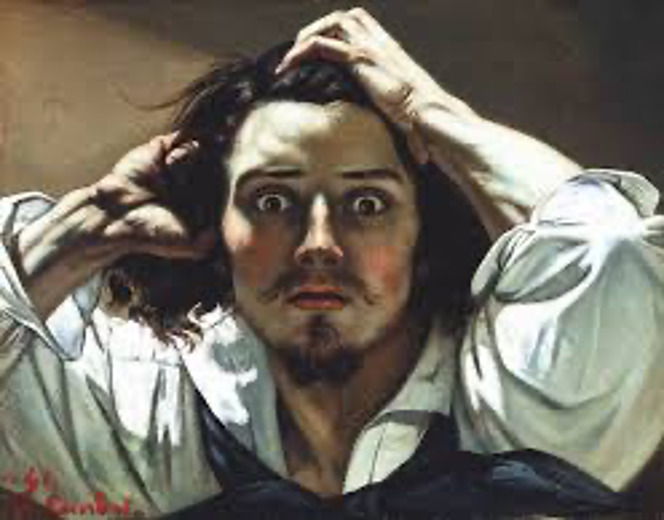Early Modern Era
The Early Modern Era was from 1900-1939, during that time we saw a world war and a great depression. The art that I found interesting is from World War 1.
They Bomb and Bayoneted Their Way up the enemy trench. by
Cyrus Cuneo 1914. London England.
This painting by Cuneo shows how soldiers would go into the trenches
and kill soldiers so that they can advance. This painting has details of soldiers
lying dead with their weapons and a soldier about to throw a grenade at enemy
soldiers so that they could gain on them. Cyrus Cuneo was great at showing great
detail of what was seen on the battlefield. During World War one it was all about
gaining on enemy soil. In this painting you also see dirt flying up, soldiers
crouching down so that they would not get shot. This painting is a part of the
Early Modern Era that has just started. The artist were trying to show real life
situations.
The Dead-Stretcher Bearer by Gilbert Rodgers 1919 London
England.
In this painting you see a British soldier laying on a
stretcher partially covered in a sheet. In the background you see muddy and
shell cratered landscape. The soldier helmet and medical kit are laying in the mud
behind him. Gilbert put great detail on how the life was of a dead soldier
stretcher bearer. They are climbing through mud and other dead bodies. The
first world war was known as the Great war. This is another great painting of
the real-life dramas that were going on in WWI. The emotion of the people not involved
in the war are shocked and dismayed at the true effects of the war.
The First Victoria Cross of the European War, 1914. Captain
Francis Grenfell, 9th Lancers at Audregnies, 24 August 2014 by Richard
Caton Woodville. London England.
In this painting the Richard combined the two events of the
Battle of Mons and the Charge of the Light Brigade. The Victoria Cross was
awarded to Grenfell for his actions. In this painting you see the soldiers
fighting other soldiers. The detail of adding people on horses fighting toward
the back of the horse instead of the front. You see fire from a vehicle that
was blown up. You see dead soldiers lying on the ground. Grenfell was one of
the greatest British captain for taking the courage of trying to drag away British
guns which were in danger of being captured. Richard does a great job of
showing the emotions of the soldiers who are trying to fight the enemy soldiers.
Bibliography:
1.
The
First Victoria Cross of the European War, 1914. Captain Francis Grenfell, 9th
Lancers at Audregnies, 24 August 1914 | Art UK accessed on 20 July 2023
2.
The Dead
Stretcher-bearer | Imperial War Museums (iwm.org.uk) accessed on 20 July
2023





They Bomb and Bayoneted Their Way up the Beach.
ReplyDeleteWhat a helluva scene. There isn't much linear out there unless people make it, the only straight lines I see are the trench walls, the satchel straps making an X target on the British soldiers' backs and I assume fronts, and the parallel lines created by the British rifle and bayonet being carried, and the Germain rifle or stretcher laying on the dead soldier. What a mess going on here, it really is a demonstration of human strength and depravity. I guess war will bring those things out. The use of space here is pretty complete, there is no empty space save for a little bit of sky, but even that has smoke and debris in it. This painting, though it isn't quite photographic, does have elements of realism. Realistic shadows cast from a central light source likely the sun, the proportions of the people are correct, the pockets and pouches, the folds and creases of the clothing, the smeared blood.
The Dead Stretcher Bearer. What a magnificent display of human horror. The drab colors really ad to the bleakness. The realism, but with softened edges that aren't quite photographic, is astonishing. The wet sheen on him, the wrinkles and folds bring a realistic texture, the shadows, his reflection on the water in the hole where he died. I can smell the wetness, the burning powder. It's horrifying.
The First Victoria Cross. Another horribly beautiful capture of a moment. These three pieces share a version of realism; they're not photographic, the edges are softer somehow, the texture isn't photographic. But it is still realistic; the shadows are correct, the people and horses are properly proportioned, fading and shrinking in the distance to force the perspective and show us distance. The colors in uniforms and horses clash, demonstrating the violence that is occurring. The only straight lines are those of war implements; swards, rifles and bayonets, shields, lances. Lances and swards seem so out of place on battlefield with rifles, and the large artillery. You can see the look of terror on the horses, where the men seem more...matter of fact. Even though it's not hyper realistic like a photograph, you can still see the hair shining on the horses, the muscles rippling beneath the hide, the texture reveals the wrinkles and folds on the uniforms, the troughs in the dirt, the individual strands of hay. Though this elicits fear and anger, it doesn't give me the sense of horror and doom the previous pieces did. I felt hopeless looking at the first two, like there was no way out. This last piece, being in an open space and not in a trench or a wet hole in the ground, leaves me feeling like there is a way that some of the men will survive the battle, that there may be hope.
I definitely would not own a copy of the first two pieces. I would hang a copy of the third piece in my crafting area if I was given a copy.